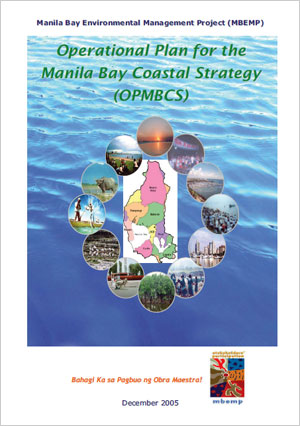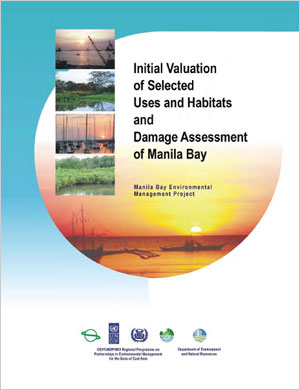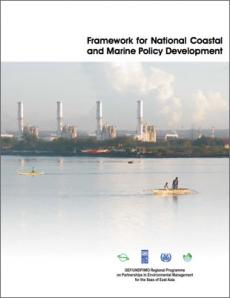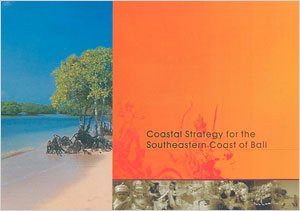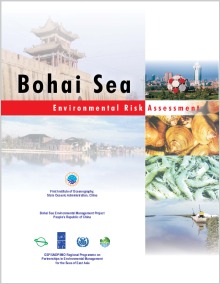
Breadcrumb
Operational Plan for the Manila Bay Coastal Strategy (OPMBCS)
The development of the Operational Plan is a transformation of the identified strategies and action programs in the Manila Bay Coastal Strategy (MBCS) into action plans and programs with estimated budgets and timeframe. The Operational Plan entails the integration of practical lessons learned in the course of the implementation of the Manila Bay Environmental Management Project (MBEMP) with the adoption of relevant national and local strategies and programs.
Initial Valuation of Selected Uses and Habitats and Damage Assessment of Manila Bay
This report presents the results of the economic valuation of selected uses and habitats of Manila Bay, as well as the value of damages from different risk factors around the Bay. The study relied on a variety of valuation techniques and on secondary data to meet these objectives. It also relied on the results of the ground-truthing activities of the Site Management Offices (SMOs) and the Integrated Environmental Monitoring Program (IEMP) of the Manila Bay Environmental Management Program (MBEMP).
Framework for National Coastal and Marine Policy Development
The study presents national practices, experiences and the lessons learned in the policy development process and provides policy analysis and decision-making guidance for countries in the East Asian Seas region. The Framework outlines a general process, good practices and constraints that may show some light in the development of national coastal and marine policies.
Coastal Strategy for the Southeastern Coast of Bali
The Coastal Strategy for the Southeastern Coast of Bali describes the socioeconomic conditions, cultural setting and environmental aspects of Bali. It illustrates how the people value these assets, and what their perceived threats to these assets are. The strategy also presents a comprehensive environmental management framework with targeted outcomes and action programs involving the participation of stakeholders from government, nongovernment organizations, private sector and civil society groups.
Sihanoukville Coastal Strategy
The Coastal Strategy of Sihanoukville captures the people's vision or desired outcome for the coastal area of Sihanoukville, and, fundamentally, identifies the strategies and actions necessary for realizing this common vision. The Coastal Strategy recognizes the rich assets and enormous development potential of Sihanoukville and is aware of the threats, which if not addressed, could undermine these opportunities. One of the core focuses of the Coastal Strategy is to maximize socio-economic development opportunities, and build international recognition for Sihanoukville as a center for business and leisure. Preserving the unique and diverse natural and ecological heritage of Sihanoukville is of utmost importance, and it is recognized that for truly sustainable socio-economic development, the integrity of the natural environment must never be compromised.
Port Klang Initial Risk Assessment
The GEF/UNDP/IMO Regional Programme on Building Partnerships in Environmental Management for the Seas of East Asia (PEMSEA) identified Port Klang, which includes Klang and Kuala Langat districts as one of the six national demonstration sites in the region to develop and implement integrated coastal management (ICM) as a strategic environmental management framework in partnership with the national government and local stakeholders in the public and private sectors. This pioneering effort is in line with Agenda 21 of the Selangor State Government. The Memorandum of Agreement between the State Government of Selangor and PEMSEA for the implementation of this project was signed on 19 July 2001. The Selangor Waters Management Authority (Lembaga Urus Air Selangor or LUAS) has been designated by the State Government of Selangor to be the Project Management Office (PMO) for the ICM Project. This report presents the findings and outcome of the initial risk assessment (IRA) of Port Klang, Malaysia, which is one of the component activities of the Port Klang ICM Project. The assessment was undertaken by an inter-agency, multi-disciplinary Technical Working Group composed of experts and technical personnel from various government agencies and institutions involved in the Port Klang ICM Project. The IRA of Port Klang was started during the Training Course on Environmental Risk Assessment, held from 23–28 July 2001 at Burapha University in Chonburi, Thailand, and subsequently completed at the project site. Comments from various institutions were used to refine the initial drafts.
An Overview of Public and Private Sector Capacities for Environmental Infrastructure in the Philippines
This study focuses on environmental infrastructure improvements for water, sewage, sanitation, industrial and agricultural waste management. Specifically, it aims to do the following: a) identify the key stakeholders in environmental infrastructure (EI) project development and financing; b) determine the relevant environmental infrastructure policies, strategies, priorities, programs/projects of key stakeholders; c) assess the existing capacities to develop and finance EI projects; and d) surface major barriers/constraints to the development, implementation and financing of EI projects.
An Overview of Public and Private Sector Capacities for Environmental Infrastructure in Five East Asian Countries
The GEF/UNDP/IMO Regional Programme on Partnerships in Environmental Management for the Seas of East Asia (PEMSEA) commissioned the Global Environment & Technology Foundation to conduct a desktop review of current constraints regarding the provision of water and sewerage/sanitation services in East Asia, covering five countries namely: Cambodia, China, Indonesia, Philippines, and Vietnam. The review focused on four key components: 1) supply and demand situation in the water and sewerage/sanitation services; 2) institutional arrangements and structures; 3) funding sources and constraints; and 4) private sector participation.
Bohai Sea Environmental Risk Assessment
The Bohai Sea Environmental Risk Assessment provides information on the rationale of the environmental risk assessment, the methodology developed and applied in the Bohai Sea initiative, the results of the work and recommendations for improving the risk assessment as a management tool in Bohai Sea. The Bohai Sea risk assessment was conducted in three stages. First, an initial risk assessment (IRA) was implemented as a screening mechanism for identifying priority environmental concerns on a sea-wide basis and the related data gaps and uncertainties. Second, the targets of interest were re-focused to human health, habitats and commercial and non-commercial marine species. In addition, the refined risk assessment was conducted at two levels. Risks to Bohai Sea as a whole were considered, in which the sea was treated as a single compartment and a single average exposure concentration was estimated. For selected contaminants, risks to the four parts of the Bohai Sea (Liaodong Bay, Bohai Bay, Laizhou Bay and the central region) were estimated, by calculating local exposure concentrations in the vicinity of specific human activities or natural resources. And lastly, the final report verified the data for each step of the assessment and further tidied up the calculation and identification of the environmental concerns. Sources of uncertainties in the risk assessment for some contaminants were also identified.
